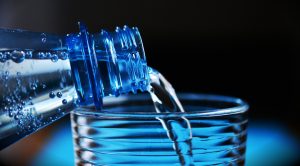
With spring finally here and summer right around the corner, the temperature is beginning to rise. The impending arrival of summer also marks the start of fall sports practices. Getting used to practicing in hot temperatures can be a difficult thing for a young athlete to do. There is a bit of good news for coaches and players however. According to the American Academy of Pediatrics, a child’s body regulates body temperature at roughly the same level of efficiency as an adult. Previously, this was not believed to be the case. Even with this relatively new finding, heat stroke and other heat-related illnesses can strike at any moment if coaches and athletes don’t take the proper precautions.
The responsibility to prevent heat illness is one that shouldn’t be taken lightly. While you’re gearing up for an intense summer of practices, scrimmages, and exercise, remember to keep this information in mind to combat heat-related illnesses.
Hydration is vital

Hydrating during strenuous activity isn’t enough though. Keeping up with hydration before and after practicing is equally as important. Going into the exercise with sufficient fluid levels is highly recommended. That way, maintaining an appropriate level is more manageable. After you are finished, continuing to drink fluids is crucial. The amount you’re sweating may have decreased, but your body is still trying to recoup after losing so much liquid.
What you should be drinking is determined by the duration of physical activity. Exercise that lasts about an hour or less really only requires water. Your electrolytes will still be more so intact. Water can get the job done just fine. Prolonged activity lasting more than an hour necessitates something else. Besides water, consume a sports drink like Gatorade to replenish electrolytes.
Common signs of heat illness
Coaches and players should be able to recognize the symptoms of heat-related illnesses in order to prevent them. These include, but aren’t limited to:
- Headaches
- Nausea
- Abdominal pain
- Cramping (especially in calves)
- Dry or sticky mouth
- Fatigue
If you are exhibiting any of these signs during a practice or game, let your coach know. You should not be playing.
Guidelines to follow
Obeying some guidelines can effectively prevent heat illness in young athletes. Coaches and players need to be educated on what signs to look out for and proper protocol to follow.
- Coaches should modify activity as needed, keeping the heat in mind. If practices or games need to be canceled or rescheduled because it’s too hot, so be it.
- Coaches also need to know their players’ limitations. Those who are not as fit or capable of withstanding prolonged heat should be monitored closely.
- Any athlete who is just getting over an unrelated illness is more susceptible to heat stroke or a similar ailment.
- Train staff members in caring for heat-related illnesses.
- Ease players into playing in heat. Allow them to adapt gradually instead of jumping right into intensive practices.
- Provide plenty of fluid breaks throughout practices and games.
- If you plan to have a two-a-day practice or have multiple games in a day, strive to give players at least two hours of rest in between activities.
- Coaches should urge players to wear lightweight, loose fitting, light-colored clothing during practice. These types of clothing are best at keeping heat out.
As long as coaches and athletes follow these guidelines, they’ll be able to prevent heat illness. There shouldn’t be any problems participating in outdoor sports during the hotter months.
